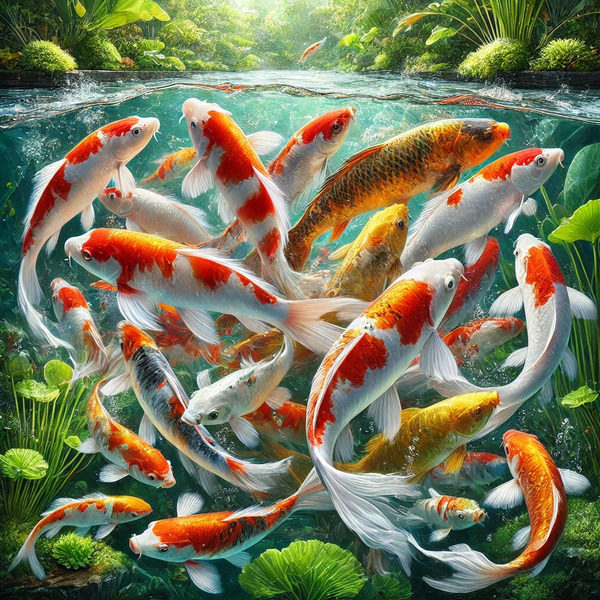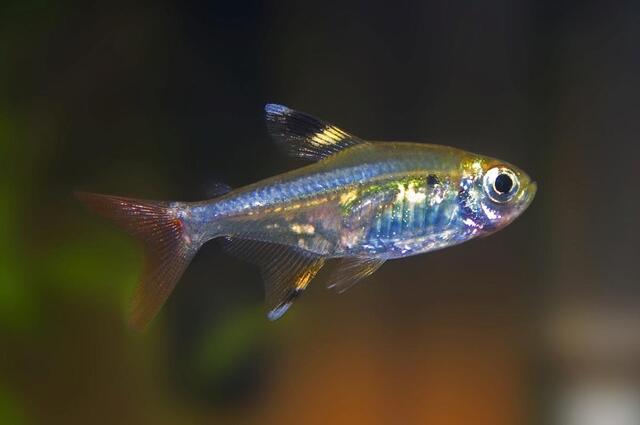Cypriniformes
Cypriniformes belongs to the class of bony fishes, with 6 families, 256 genera and 2,422 species. my country has 6 families, 178 genera and 732 species. Cypriniformes is the largest order of living freshwater fishes, mainly distributed in southeastern Asia, followed by North America, Africa and Europe. It includes large phytoplankton-eating silver carp, herbivorous grass carp and sessile algae-eating schizothorax. The four major carps, silver carp, bighead carp, silver carp and grass carp, all belong to Cypriniformes.
I. Introduction to Cypriniformes
1. Definition and Key Traits
Taxonomic Scope: Cypriniformes is a large order of primarily freshwater fishes, comprising more than 4,000 described species distributed worldwide (except in polar regions, Australia, and South America, where they are less common or absent).
Common Name: Often referred to as “carp-like” or “minnow-like” fishes, as members include carps, minnows, barbs, loaches, and suckers.
Morphological Features:
Jaw and Pharyngeal Teeth: They lack true teeth in the jaw; instead, many species possess specialized pharyngeal (throat) teeth used for grinding food.
Weberian Apparatus: Most cypriniform fishes have a chain of small bones (the Weberian ossicles) connecting the swim bladder to the inner ear, enhancing hearing ability.
Scalation and Body Forms: Many have cycloid scales and a generally streamlined or cylindrical body shape; loaches and some others can be elongated and often have barbels around the mouth.
Habitat: Predominantly freshwater—lakes, rivers, streams, swamps—with a wide range of ecological niches, from high-altitude cold streams to lowland tropical floodplains.
2. Ecological and Economic Importance
Global Freshwater Dominance: Cypriniformes represent one of the most diverse and widely distributed orders of freshwater fishes, particularly in Asia, Europe, and Africa.
Fisheries and Aquaculture: Many species (e.g., common carp, various barbs) are important for food, while others (e.g., goldfish, koi) are popular ornamental fish.
Environmental Indicators: As many cypriniform species are sensitive to water quality and oxygen levels, they often serve as bioindicators for aquatic ecosystem health.
II. Evolutionary History of Cypriniformes
Origins and Early Development
The fossil record and molecular data suggest that early cypriniform fishes diverged from other ostariophysans (a larger superorder including Characiformes, Siluriformes, and Gymnotiformes) during the Cretaceous to early Paleogene.
Their Weberian apparatus links them to other ostariophysans, reflecting an evolutionary innovation for better hearing that likely facilitated their ecological success in varied freshwater habitats.
Global Dispersal and Radiation
Tectonic events (e.g., the breakup of Gondwana) and subsequent landmass connections shaped the distribution of cypriniform lineages, particularly across Eurasia and Africa.
In more recent geologic times (Neogene, Quaternary), climatic oscillations and river course changes fostered numerous speciation events, leading to high local endemism in river basins like the Mekong, Yangtze, Ganges, and African Rift lakes.
Modern Classification and Molecular Insights
Ongoing phylogenetic research continues to refine relationships among cypriniform families, often splitting large “traditional” families (e.g., Cyprinidae, Cobitidae) into multiple families or subfamilies.
Certain lineages, such as hillstream loaches, demonstrate specialized adaptations (suction-cup fins, flattened bodies) to fast-flowing waters, illustrating ecological innovation within Cypriniformes.
III. Major Families and Representative Genera
Below is a classification table outlining some of the most recognized cypriniform families, along with a few key genera and example species. Please note that due to ongoing taxonomic revisions, some sources may group or split families differently.
1. Family Cyprinidae (Carps, Minnows, Barbs, Danios, Rasboras)
| Representative Genera | Example Species | Distribution & Notes |
|---|
| Cyprinus (Carps) | Common Carp (Cyprinus carpio), Koi varieties | Originating in Eurasia; farmed worldwide for food and ornamental purposes. |
| Carassius (Crucian Carp, Goldfish) | Goldfish (Carassius auratus) | One of the oldest domesticated fish; popular ornamental worldwide. |
| Danio (Danios) | Zebra Danio (Danio rerio) | Often used as a model organism in scientific research; popular aquarium fish. |
| Barbonymus, Puntius, Labeo (Barbs) | Tinfoil Barb (Barbonymus schwanenfeldii), etc. | Common in Southeast Asia; many small barbs used in home aquariums. |
| Rasbora (Rasboras) | Harlequin Rasbora (Trigonostigma heteromorpha, prev. Rasbora heteromorpha) | Beloved aquarium fish from Southeast Asian streams. |
| Hypophthalmichthys (Bighead, Silver Carp) | Silver Carp (Hypophthalmichthys molitrix), Bighead Carp (H. nobilis) | Used in aquaculture; introduced widely, sometimes invasive in non-native areas. |
2. Family Catostomidae (Suckers)
| Representative Genera | Example Species | Distribution & Notes |
|---|
| Catostomus, Moxostoma | White Sucker (Catostomus commersonii), Redhorse (Moxostoma spp.) | Native to North America (with a few in Asia). Typically benthic feeders, vacuuming algae/invertebrates off substrates. |
3. Family Cobitidae (Loaches, “True Loaches”)
| Representative Genera | Example Species | Distribution & Notes |
|---|
| Misgurnus (Weather Loaches) | Weather Loach (Misgurnus anguillicaudatus) | Known for sensitivity to atmospheric pressure changes (“weather fish”). Common in East Asia. |
| Cobitis (Spined Loaches) | Spined Loach (Cobitis taenia) | Europe and Asia; small, elongated bottom dwellers with barbel structures. |
4. Family Nemacheilidae / Balitoridae (Stone Loaches, Hillstream Loaches)*
| Representative Genera | Example Species | Distribution & Notes |
|---|
| Triplophysa, Nemacheilus, Sewellia, etc. | Tibetan Stone Loach (Triplophysa tibetana), Hillstream Loach (Sewellia lineolata) | Adapted to swift currents with flattened bodies, sucker-like fins. Found in mountainous streams of Asia. |
(Note: The classification of hillstream loaches has undergone multiple revisions, sometimes split among Balitoridae, Gastromyzontidae, and Nemacheilidae.)
5. Family Gyrinocheilidae (Algae Eaters)
| Representative Genus | Example Species | Distribution & Notes |
|---|
| Gyrinocheilus | Chinese Algae Eater (Gyrinocheilus aymonieri) | Native to Southeast Asia, often sold as an algae-eating aquarium fish. |
6. Other Notable Families
Psilorhynchidae (Psilorhynchus fishes, “Torrent minnows”) – small, streamlined fishes in South/Southeast Asian rapid streams.
Xenocyprididae (East Asian cyprinids, e.g., including major Chinese carps) – often integrated into Cyprinidae depending on classification.
Paedocyprididae – includes some of the world’s smallest vertebrates (Paedocypris), found in Southeast Asian peat swamps.
IV. Summary
Widespread Evolution and Great Diversity
Cypriniformes is among the most expansive orders of freshwater fishes worldwide, reflecting repeated episodes of adaptive radiation in rivers, lakes, and streams.
Their success is linked to physiological traits (Weberian apparatus, pharyngeal teeth) and morphological diversity.
Ecological and Economic Roles
Many cypriniform fishes are cornerstone species in aquatic ecosystems, influencing trophic dynamics (e.g., controlling algae, serving as prey for larger fishes).
They form the backbone of freshwater aquaculture in many regions; iconic ornamental forms (koi carp, goldfish, aquarium loaches) also highlight their cultural and economic importance.
Conservation Challenges
Habitat loss, pollution, overharvesting, and invasive introductions threaten numerous Cypriniformes.
River damming and wetland drainage disrupt migratory routes and spawn grounds, while hybridization and disease transfer from aquaculture complicate wild population management.
Concluding Note
This Cypriniformes classification and introduction is intended to help readers understand the evolutionary history, classification system and ecological value of this order of fish. For more in-depth species-level or regional information (such as distribution, morphological characteristics, and conservation status), please refer to professional ichthyological materials, regional fish retrieval atlases, and the latest molecular systematic research. I hope this can present you with a complete "Cypriniformes classification encyclopedia" and increase the public's attention and understanding of this global freshwater fish group.



